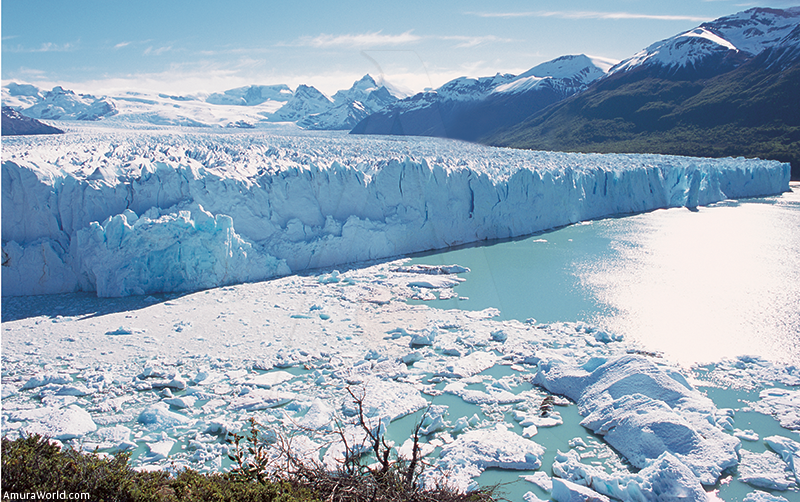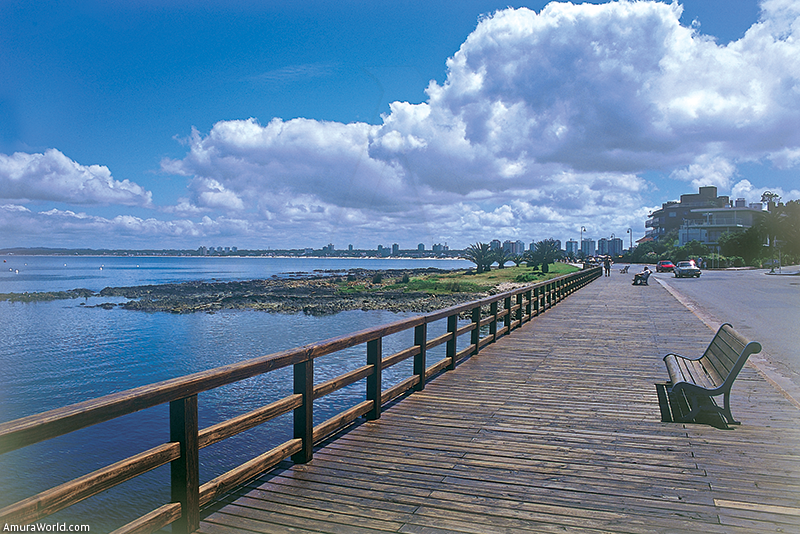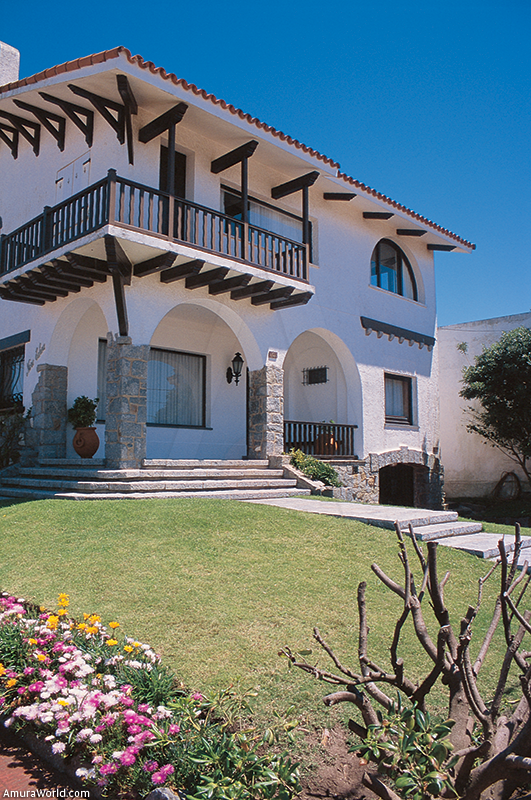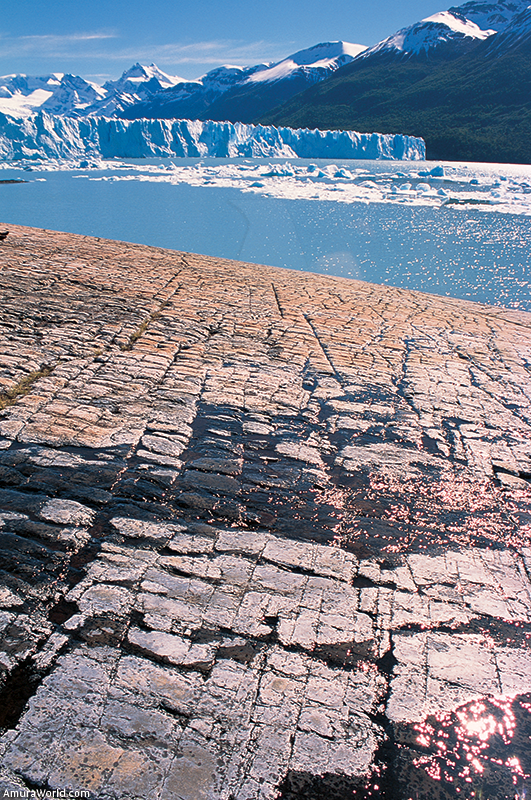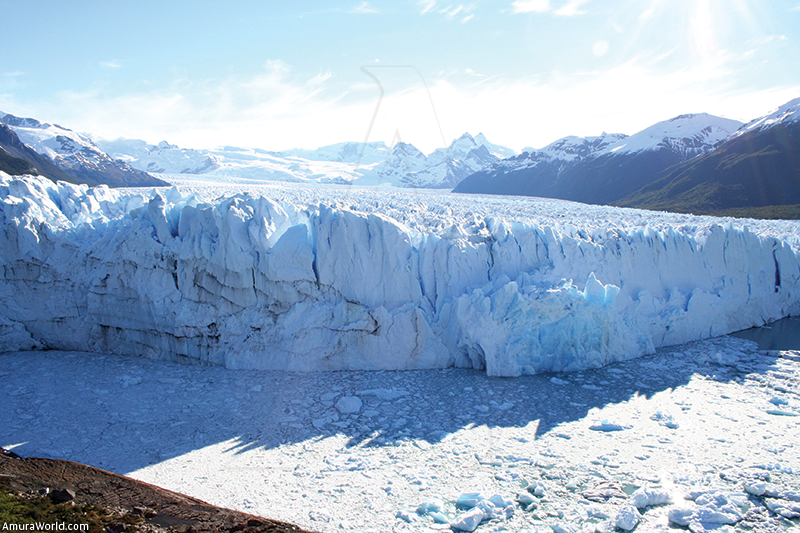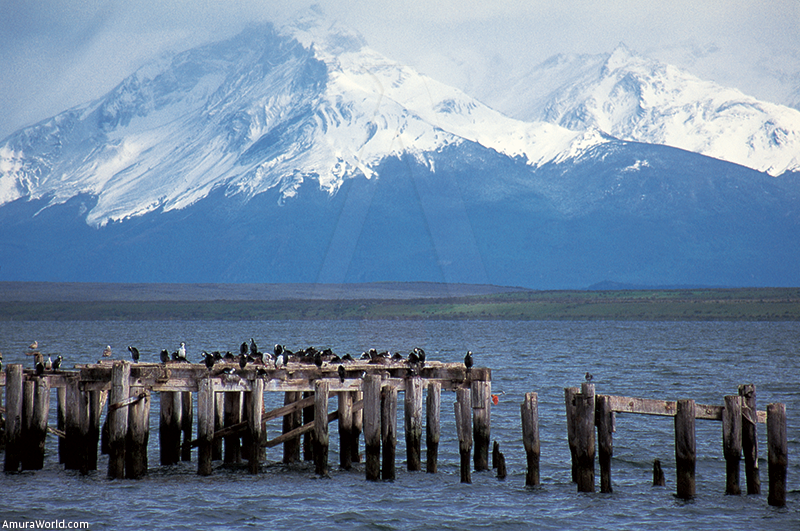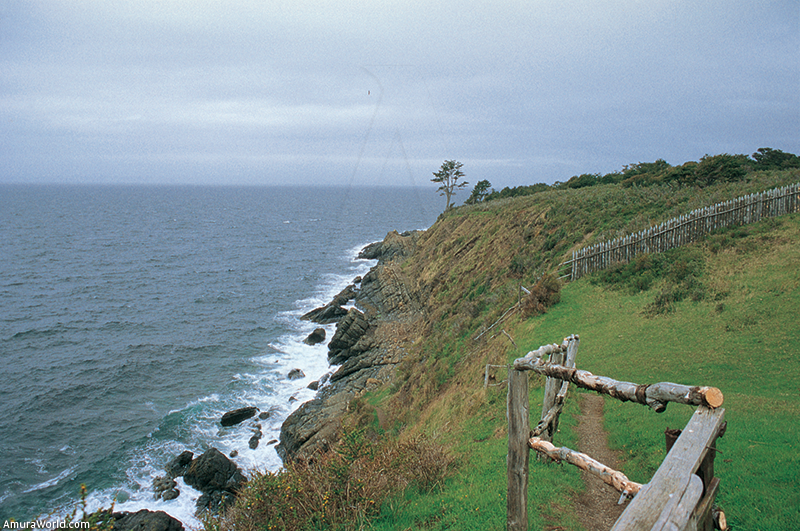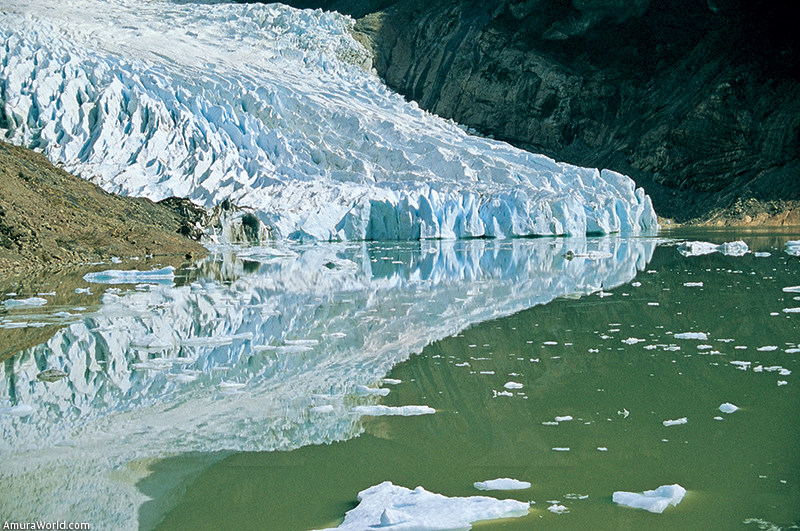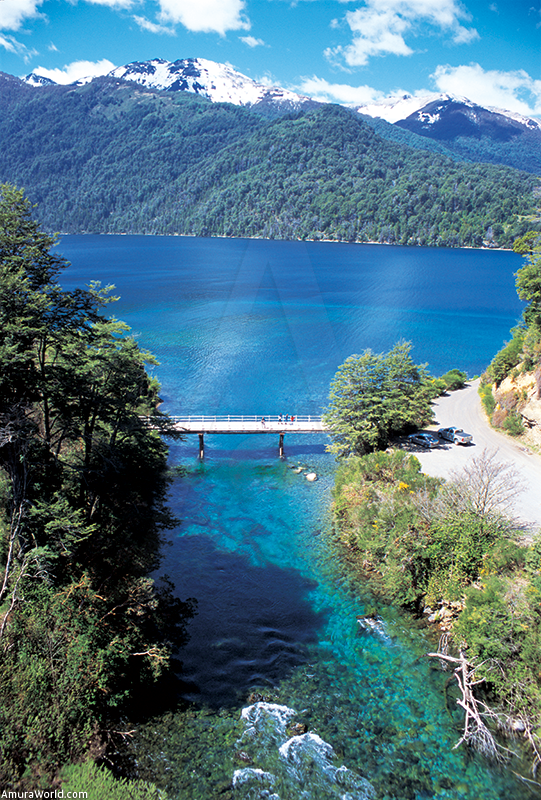Punta del Este, Perito Moreno, Patagonian Chile
The southern seas are of an astonishing color and invite you to lose yourself in their sumptuous sceneries, where the ice is reflected in the static water and the wind stirs the waves. Penguins fish, seals warm themselves in the sun and the mountains compete with the plains. The rhythms of the tango boom over the ripples and the guitar croons Chilean ballads and accompanies our Southern Core journey with intense melodies. Our LanChile flight took us to Buenos Aires, where the adventure always begins with the enjoyment of this marvelous city and the heart beat of San Telmo.
Punta del Este
We sailed from Buenos Aires and reached Punta del Este thanks to some moderate winds. The city rises on the horizon like a mirage. The pearl of the Southern Cone, it is very exclusive and invaded by the rich and famous when the southern summer begins. From the moment the warm weather arrives it attracts the Brazilian and Argentinean jet set, who liven up its beaches, streets, elegant shops and parties, which end at daybreak. The people vie in elegance and wear the finest clothing, drive the most sophisticated cars and show off eye-catching jewelry. Gorlero Street, swathed in neon and sophisticated store windows, beats to the rhythm of the beautiful women who walk by and show off their spectacular tan bodies while the men show off their Porsches or BMWs. The restaurants of the Rambla Argentina are lively and dazzle with the melody of the voices and the Amura team participated in the private parties that take place in the elegant mansions that are located at the edge of the sea or hidden among the pine trees. Casinos, like the Conrad, burst with people and we did not miss the famous tea at Las Cumbres, a marvelous, exclusive hotel restaurant located on the top of the Cerro de la Ballena, a place favored by intellectuals and where it is good to see and be seen and bump into someone that is well-known.
In Punta del Este we also admired the long beaches of rolling golden dunes, the deep blue sea, the Sauce Lagoon that reflects the pine forests, and the Maldonado stream and its amazing estuary filled with birds and where the charming town of La Barra is located. The parrots liven the ambiance, the sea lions swim among the rocks and Punta Ballena, with its arid, Mediterranean air, is a place of elegant mansions near the studio of the Uruguayan artist Carlos Paez Vilaró.
In the marina, located opposite the Mansa beach on the Río de la Plata, the Amura sailboat rivaled in beauty with the most stunning yachts. The southern point of the city is a nest of exclusive houses lying under the shade of the blue church and the lighthouse. On the Atlantic side the waves crash harder and the bodies compete in perfection and acquire the color of brown sugar. At night we dined in La Bourgogne or the Blue Cheese.
Punta del Este is a star of the Uruguayan Riviera and it beats the rhythm of the parties and the scandals that fill the pages of gossip magazines. Even so, it is a place that has enormous charm.
Perito Moreno
Perito Moreno is a fabulous glacier in south Patagonia, where the Andes meet the arid plains. We flew to El Calafate and, after exploring these plains and sailing along the border of the Argentino Lake, where pink flamingoes search for their food in the jade colored waters, we reached the national park and lodged in the wonderful Los Notros hotel, facing the glacier which descends from the snowy peaks and slides slowly to the Argentino Lake, which itself formed the glacier and others like it.
The view is spectacular. The whiteness of the ice contrasts with the forest sunken among the rocky mountains, the wall of the glacier, 60 m (197 ft) high, takes on blue tones and, once in a while, great blocks of ice break off and form ice flows that drift on the Brazo Chico. The noise is amazing, a real roar accompanied by frictions that end with the sound of the mass falling into the water.
We took the boat to visit the wall of ice, at a good distance in order to avoid the waves caused by the falling blocks of ice, sailing among the icebergs, enjoying the majestic spectacle of this elegant natural spot. We reached the southern bank and entered the forest, where we found calafates, those bushes with small yellow fruit, and sailed until we reached the edge of the glacier, whose body slides over the mountain. We found a cave of ice where the light turns blue and violet and we put on our crampons and walked on the ancient ice and discovered a scene straight out of a fairy tale, a place where puddles retain water that turns blue, some rivers cross the surface or the entrails of the glacier and you can hear Perito Moreno growl. Immersed in an unreal, fabulous, intriguing world and delighting in the incredible light we drank rum in glasses of ice.
With its 60 m (197 ft) of height and 15 km (9.3 m) of length, it is one of the planet’s few glaciers that advance thanks to the low height of the Andes of this region, which permits the humidity of the Pacific to deposit snow on its peak. This snow then becomes ice and feeds the glacier, which moves towards the Argentino Lake. It is renowned for its impressive fracture, which takes place more or less every four years and is an extravagant sight that attracts people from around the world. In the spot where it meets the Magallanes Peninsula it presses hard against the rocks, separating the Brazo Chico from the canal of ice flows, which always communicates with the great lake. This phenomenon is what makes the glacier act as a dam and the Brazo Chico rises until the water’s pressure is such that it breaks it. Because of its weight, the water digs a tunnel below the ice, right were it meets with the land, until the ice that melts below cannot support the weight of the glacier and the dam breaks in a great explosion of ice and water, forming huge waves.
This spectacle can last four days and once the level of the Brazo Chico reaches that of the lake the waters become calm, the glacier continues to advance until it finds itself again with the Magallanes Peninsula and, little by little, the waters of the Brazo Chico will rise again.
In the forest there are beautiful waterfalls and nostros, those bushes of red flowers, adorn the scenery, parrots fill the air with their calls and the nights spent at the hotel are a cozy moment that make the trip to Perito Moreno one of great intensity.
Ushuaia
We reached Ushuaia by plane just in time to admire the mountains that form Tierra del Fuego and its glaciers and board the ferry that would take us to Punta Arenas in Chile. The voyage was very hard, with strong winds and a cloudy sky with occasional snow. The Beagle Channel offers safe but difficult sailing and is populated by colonies of seals and penguins. We passed the islands of Tierra del Fuego with a very rough sea, as if each waves wanted to swallow us, until de entered the Cockburn Channel, a spot protected from the wind, and reached the Magallanes Strait, where moderate winds stir up the surface of the water. We passed the famous Bulnes Fort, built in 1843 to mark the occupation of this territory and later abandoned due to lack of drinking water and the harsh climate. Its wooden structures defy the strong winds that force the small number of trees to grow crooked and close to the ground. We passed Puerto Hambre, established in 1584 by Pedro Sarmiento de Gamboa as “The city of King Don Felipe” and quickly abandoned until the middle of the 19th century, when it became a fishing village. Finally Punta Arenas appeared, a place where we would be able to rest our bodies and recover from the seasickness that had us in its grip since we left Ushuaia.
Punta Arenas and the Magallanes Strait
Punta Arenas, founded in 1848 on the western bank of the Magallanes Strait, is the liveliest and most interesting city in Patagonia. It has mansions that date from the economic boom of the region due to the exploitation of wood at the end of the 19th century and, later, sheep farming in the ever green plains. It is an excellent place in which to enjoy wonderful seafood and explore the mansions that are a symbol of the history of the colonial families that made their fortunes in this region such as the Braun-Menéndez house, the Castillo de Piedra, that belonged to Charly Milward, and the house of Sara Braun. They stand out in the center of the city, where the proud cathedral dominates the scenery. The cemetery is a place that must be visited since its imposing mausoleums, authentic mansions and the resting place that these nouveau riche dedicated to their dead or prepared for themselves, must be admired. Punta Arenas has a very competitive free trade zone and the journey through the Magallanes Strait is a stunning voyage, ideal for observing the ducks, foxes and rheas that inhabit the plains.
We reached Seno Otway by car and there we observed the very noisy colony of Magallanes penguins that nest in the sandy beaches and under the bushes. It is a wonderful spectacle to see them leap out of the water helped by the waves. Continuing our journey north, we crossed the plains where sheep, from the ranches sprinkled in the area, crop the grass and passed Río Verde, a peaceful town on the edge of beautiful Seno Skyring, before again encountering the Andes range. Here appeared Puerto Natales.
Puerto Natales and Seno de Última Esperanza
This small port lies at the foot of a hill on which the beautiful city, which dominates a gorgeous gulf whose peaceful waters are a mirror that reflect the mountains, is located. Black neck swans, cormorants and seagulls liven up the atmosphere with their calls and the sailboats of the fishermen break the surface of the sea. We boarded the catamaran and set off to explore the gulf, which is located within a narrow pass of mountains that are the birthplace of high waterfalls. Condors fly in the peaks and seals sunbathe or fish. The voyage takes four hours and is a real pleasure, the sun is intense and burns, the scenery is majestic and the boat took us to the Balmaceda glacier. This glacier descends from the mountain to the sea but has moved back in the last few years. We docked in Puerto Toro, a small pier with a path that leads to a forest from where we admired the immaculately white Serrano glacier, whose ancient ice ends its long life in the lake where ice flows drift by, creating a sumptuous sight that is impossible to forget. You can hear the roar of the glacier while explosions punctuate its lament and parts of its border fall into the water. The comfortable catamaran allowed us the return from this exceptional place hidden at the end of the American continent.
Las Torres del Paine
The highway that took us to the north allowed us to visit the cave of the Milodón, an enormous extinct anteater that measured 3.5 m (11.5 ft) and whose remains where found in this cave, where there is now a life-size statute of the animal.
The road is beautiful and traverses plains guarded by strangely formed mountains with rocky peaks that invent surprising silhouettes worthy of the most fantastic stories. The sensation of immensity, extreme liberty and adventure were detained by the barriers we had to cross and that limit the plains and allow the sheep to be controlled. The rheas and their young cross the field and, when entering the Torres del Paine Park we found several groups of guanacos that spit wishing to scare us. The park is one of the world’s most fabulous places and is majestic, unique and superb.
The lakes take on the colors of jade and turquoise, the very high peaks, divided in Los Cuernos de Paine, 2,600 m (8,530 ft) high, and Las Torres del Paine, 2,800 m (9,186 ft) high, separated by the Francés Valley, change their forms depending on the clouds that play with them. They are reflected in the water of the Nordenskjöld or Pehoé lakes, exhibiting their surprising forms in the rays of the sun. The lake is home to migrating flamingoes, the black neck swans prefer the lagoons and the condor guards from on high. Grey Lake is a body of water formed by the melting Grey glacier, whose wall has fractured to form ice flows that melt and feed it.
Torres del Paine is one of those grand natural places that is so well preserved that its beauty can hardly be described. One can only silently admire it and perceive the vibrations of its flora, rocks and animals. It is a fascinating experience to walk along its paths or sail on its lakes and admire this treasure of the world.
The LanChile flight took us back to Santiago with our eyes overflowing with lavish, grand images, as if we had just seen a film where the sceneries are the protagonists. It is a truly original place, the world as it was at the beginning and where nature is threatened by global warming. Photos are a poor illusion of the reality, of those unique moments spent facing these superb designs created by our planet. The Southern Cone, on the Argentinean as well as the Chilean side, leaves us amazed by nature’s extravagance and, at the same time, invites us to the display of Punta del Este and Buenos Aires.
Text: Patrick Monney ± Photo: Patrick Monney.

